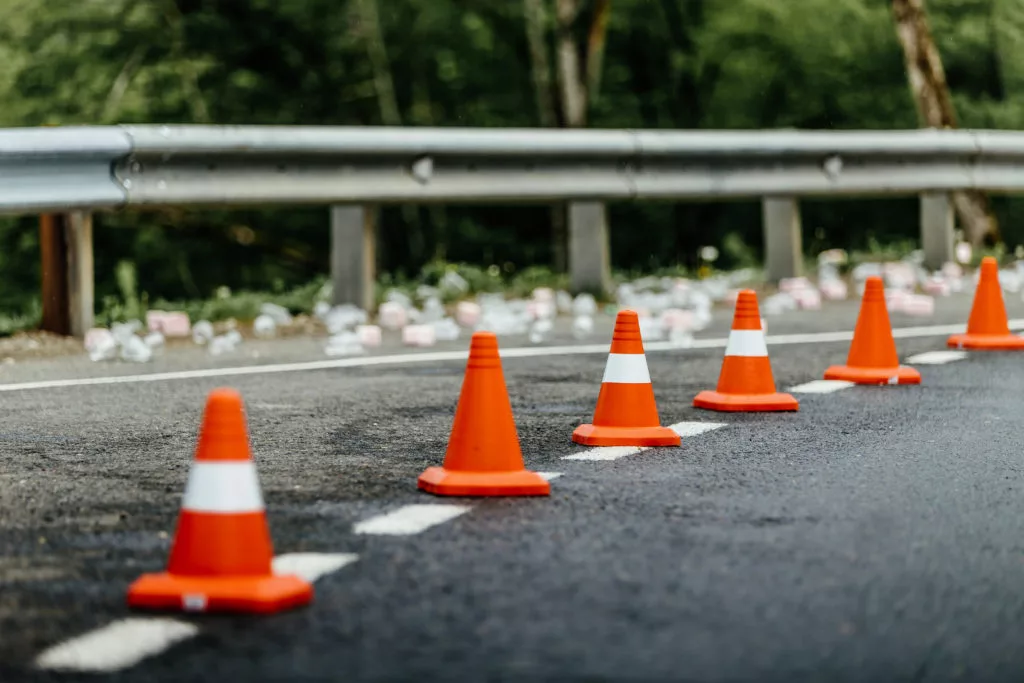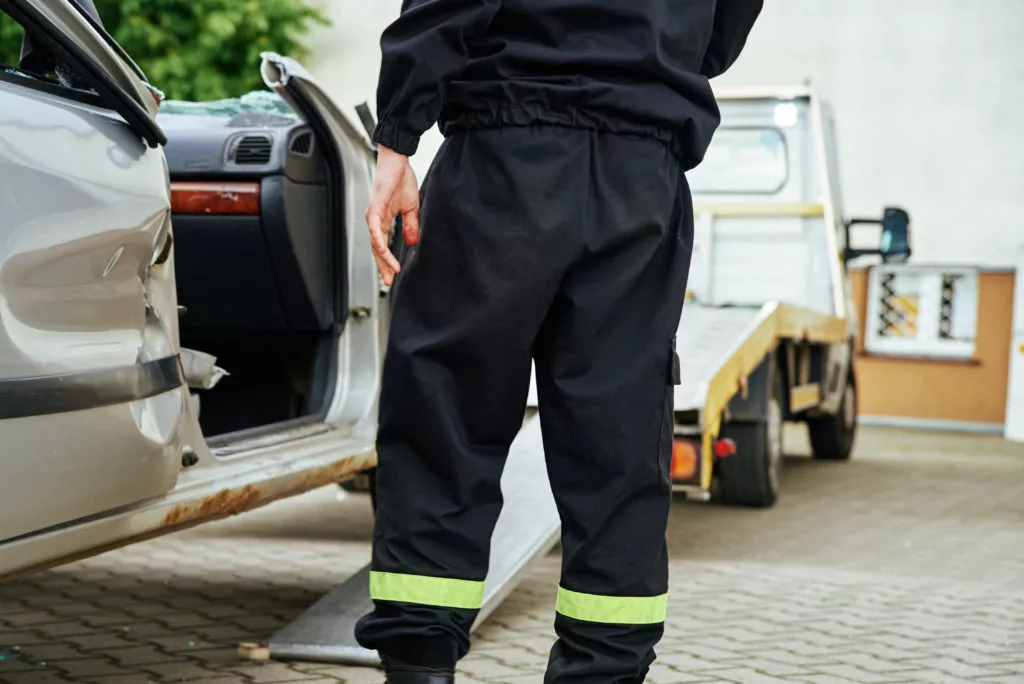Guardrails are an important safety feature of Georgia roads. They are a safety barrier to protect motorists who have accidentally left the road and help prevent them from crashing into a tree, telephone pole, retaining wall, or going down a steep hill or embankment. However, guardrails must be properly designed, installed, and maintained to help protect motorists. When they are not, serious injuries or even death can occur.
If you have catastrophic injuries from a guardrail crash or your loved one was killed in a guardrail crash, call us 24/7 at 706-354-4000 and speak to an attorney. If it’s after hours or on a weekend or holiday, hit the prompt to speak to a personal injury attorney immediately.

How a Highway Guardrail Should Function
The head of a guardrail should absorb the impact of a crash. Unfortunately, sometimes guardrails are defective and don’t perform as intended. Design defects and improper modifications to guardrails may affect how they collapse when hit. When a guardrail is defective, it may lock up or fold back. When this happens, the guardrail may twist into a sharp object that can cut right through a vehicle.

Common Injuries in Defective Guardrail Accidents
Defective guardrail accidents may cause catastrophic injuries or can even be fatal. The extent of injuries received from a guardrail accident depends on factors of the crash such as speed, or the angle at which a vehicle hits the guardrail. Some of the most common types of injuries include, but aren’t limited to:
How do Highway Guardrails Become Defective or Dangerous?
Guardrails may be dangerous because of:
- Design flaws
- Lack of maintenance
- Poor maintenance or repair following a crash or other incident
- Installation errors or “Frankensteined” guardrails
“Frankensteined” guardrails are when guardrails are made with parts from different manufacturers that don’t work properly when combined
For instance, the X-Lite guardrail is named in multiple nationwide wrongful death lawsuits, including in Georgia, which claim the devices spear cars on impact killing drivers. Georgia historically had as many as 300 X-Lite guardrails on its roads but has now replaced some of them.

Other Topics About Personal Injury
- Wrongful Death Claims After a Car Accident (2/7/2019)
- Who Pays for Lost Wages After a Georgia Car Accident? (3/21/2025)
- What’s the Average Settlement for a Semi-Truck Accident in Georgia? (12/22/2024)
- What’s the Process for Commercial Truck Accident Settlements? (9/12/2019)
- What to Know About Insurance After a Truck Accident (9/12/2019)
- What to Do After an Atlanta Pit Bull Attack (10/13/2021)
- What Is the Timeline to Settle A Georgia Car Accident Claim? (2/16/2024)
- What Is the Statute of Limitations on Medical Malpractice in Georgia? (5/15/2023)
Who is Responsible?
When a guardrail malfunctions and causes serious injuries, or someone loses their life in a crash because of a defective guardrail, who is held responsible varies based on certain circumstances. Some of the parties who may be held responsible include:
- Guardrail manufacturers
- Guardrail designers
- A private company that improperly installed a guardrail
- The city, county, or state government responsible for conducting road maintenance
Producing guardrails that have design flaws or manufacturing defects that lead to serious injuries could be grounds for a product liability claim. If your loved one died because of a malfunctioning guardrail, you may have grounds for a wrongful death claim.
The Georgia Department of Transportation (GDOT) is responsible for the maintenance of guardrails on state roadways while cities and counties are responsible for their roadways. It is the GDOT’s responsibility to inspect, repair, maintain, or remove damaged or defective guardrails along state roads. Unfortunately, sometimes damaged, or defective guardrails are overlooked during these inspections.
A History of Results
We have an established track record of bringing our clients the results they expect and deserve. We have recovered millions of dollars for our clients, and we know how to fight the insurance companies.
What is Georgia’s Statute of Limitations for a Guardrail Injury?
In Georgia, victims typically have two years to file a lawsuit for most personal injury cases.
Ante Litem Notice Required for Lawsuits Against City, County, and State
The first step in suing the city, county, or state government for a personal injury is to send an ante litem notice. An ante litem notice is a written notice sent by certified mail to the city, county, or state government informing them of the incident, the injuries, and the injured person’s intent to file a lawsuit against them. The ante litem notices for cities, counties, and the state government are varied and have different requirements. The deadlines to send an ante litem notice are as follows:
- City: 6 months
- County: 6 months
- State: 12 months
The ante litem notice must contain the required information and be served on the proper governmental officials, or a lawsuit will likely be dismissed. It is crucial you work closely with an experienced personal injury lawyer who is familiar with Georgia’s stringent ante litem notice laws and statutes of limitations. We can help.
Click here to learn more about Georgia’s Statute of Limitations for Personal Injury Cases.
Recovering Compensation After a Guardrail Injury
Victims who are catastrophically injured because of a defective or dangerous guardrail have generally experienced a traumatic and life-changing event. Victims may be able to recover compensation to help pay for medical bills, ongoing medical treatment, necessary home modifications, prosthetics, lost wages, and pain & suffering.
The BBGA Difference

The skilled personal injury attorneys at BBGA have the necessary resources to engage accident reconstruction experts, medical professionals, witnesses, engineers, and other professionals to establish the cause of your injury and prove damages. We can investigate the GDOT’s and manufacturing company’s policies and procedures to help determine whether negligent practices were a factor in your injury. If negligence is found, we will protect your interests by pursuing a case against the negligent parties and, if necessary, by representing you at trial.
Please call our office at 706-354-4000 to schedule a free consultation or fill out our contact form to tell us more about your potential case. There is no cost unless we recover money for you in your case.
